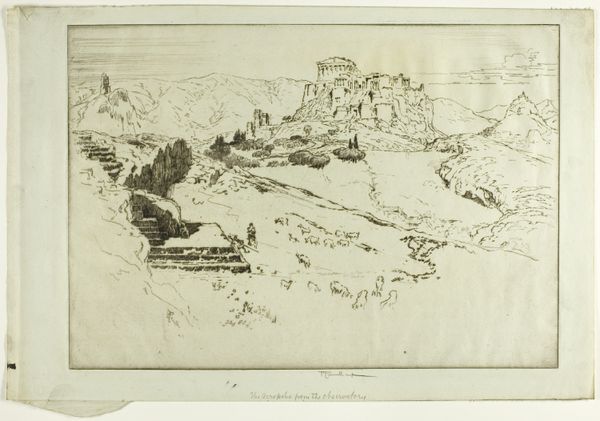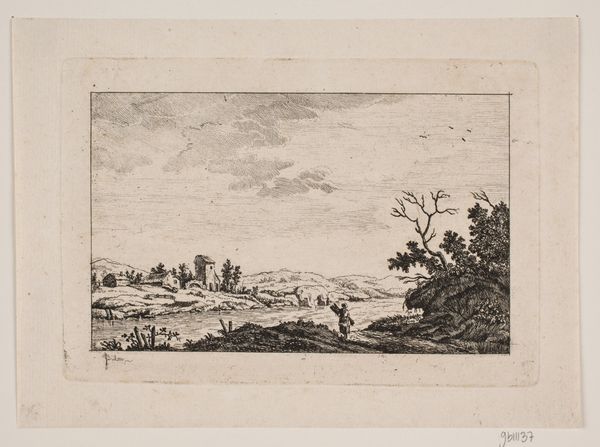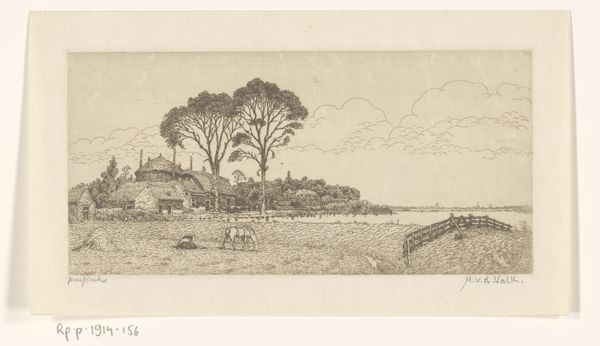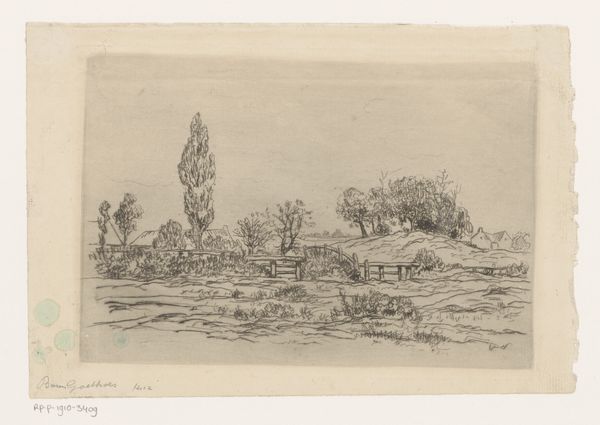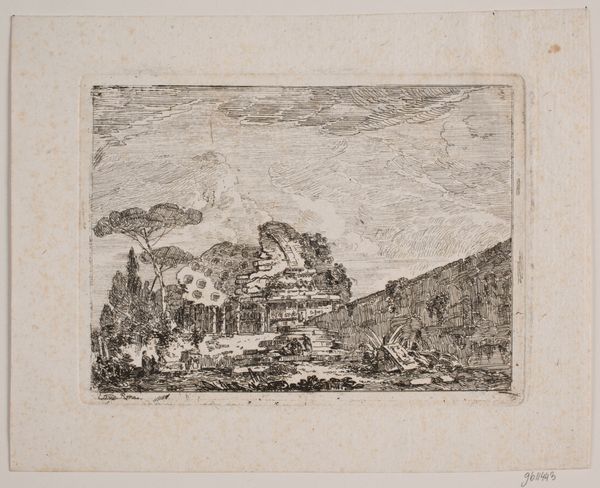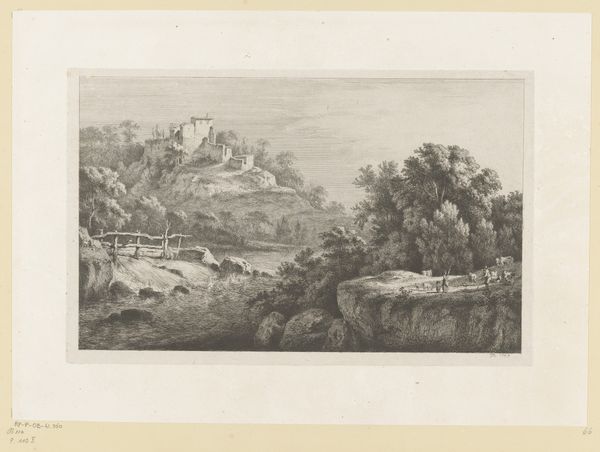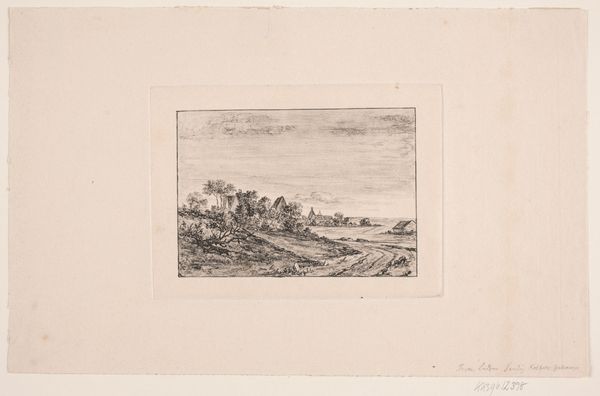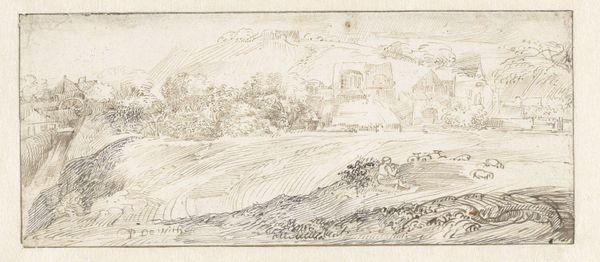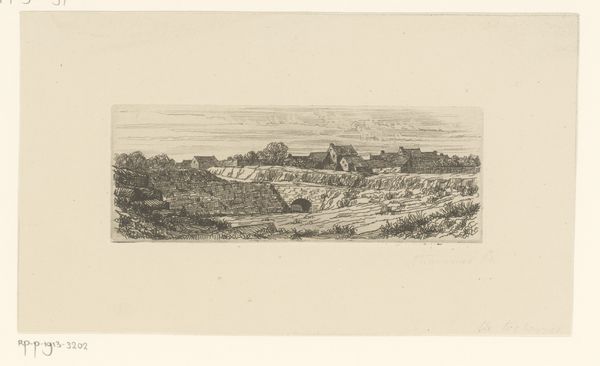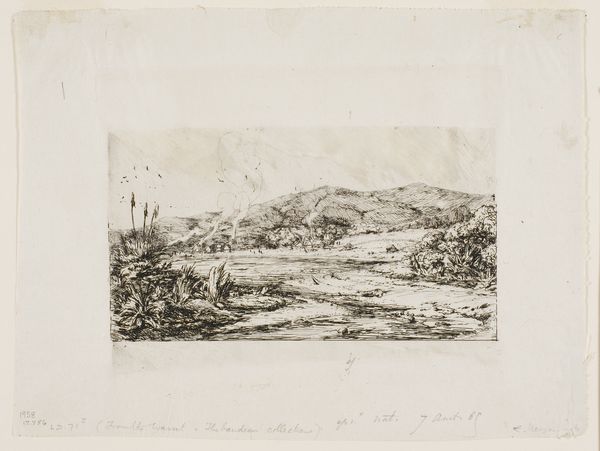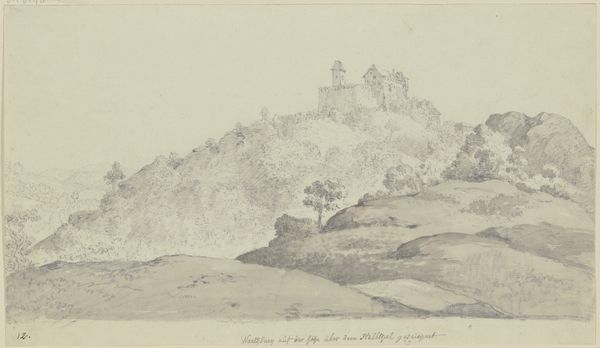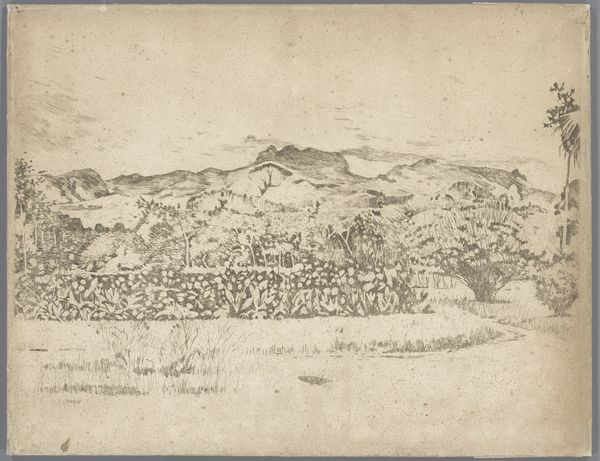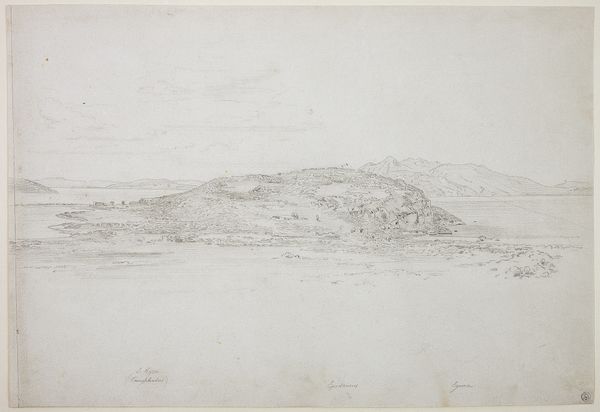
drawing, print, etching, paper
#
drawing
#
ink painting
# print
#
etching
#
landscape
#
paper
#
united-states
Dimensions: 238 × 315 mm (plate); 290 × 440 mm (sheet)
Copyright: Public Domain
Curator: Welcome! We're standing before Joseph Pennell’s 1912 etching, "The Debacle of de Lesseps, Panama," currently housed at The Art Institute of Chicago. Editor: It’s striking. There's almost a sense of impending doom, with the heavy, swirling clouds contrasted against the architectural rigidity below. The texture is fantastic. Curator: Pennell's printmaking process emphasizes tonal gradations and textures like the atmospheric depth rendered with such economy of line. But this artwork also serves as commentary. Ferdinand de Lesseps, the famed builder of the Suez Canal, attempted to construct the Panama Canal, but failed miserably due to disease, engineering issues, and corruption. Editor: Precisely. Look how Pennell visually positions the wreckage in the foreground, symbolizing failed ambition and the human cost of such hubris, especially for the workers whose lives were disregarded. It reminds us to question narratives of progress that disregard ethical concerns and local impact. Curator: I agree the ruined machinery really grounds that theme. Beyond its narrative elements, Pennell masterfully guides our eyes from that debris through the central plane, rising towards that densely packed town on the hillside, up into the airy sky—it’s very consciously constructed. Editor: The formal aspects definitely amplify that social commentary; this dense compression suggests exploitation and imbalance, especially coupled with the visual hierarchy that is foregrounded through exploitation. It serves to connect capitalist enterprise and colonialism and all the things they impacted. Curator: True, seeing it through this lens helps us acknowledge its contemporary impact, extending beyond its initial context into an important and timely conversation. Editor: It certainly leaves us much to ponder on the repercussions of unchecked ambition and the imperative to foster genuinely equitable modes of innovation.
Comments
No comments
Be the first to comment and join the conversation on the ultimate creative platform.

